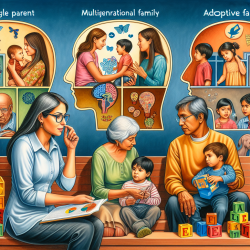Introduction
In the realm of speech-language pathology, data-driven approaches are revolutionizing the way practitioners enhance their skills and deliver better outcomes for children. A recent study titled "Using data-driven sublanguage pattern mining to induce knowledge models: application in medical image reports knowledge representation" provides insights that can be transformative for speech-language pathologists (SLPs). This blog explores how these insights can be applied in the field of speech-language pathology, particularly in the context of online therapy services like those provided by TinyEYE.
Understanding Data-Driven Sublanguage Pattern Mining
The research paper introduces a novel method that combines natural language processing (NLP) and semantic network analysis to create a knowledge model. This model is capable of representing complex relationships and entities within a specific domain, such as medical image reports. The key takeaway is the ability to transform unstructured text data into a structured, computable format, which is crucial for effective information retrieval and decision support.
Applications in Speech-Language Pathology
While the study focuses on medical image reports, the underlying principles of data-driven sublanguage pattern mining can be applied to speech-language pathology. Here are some ways SLPs can benefit:
- Enhanced Assessment: By utilizing NLP and semantic network analysis, SLPs can develop more accurate and comprehensive assessments of a child's speech and language abilities.
- Personalized Therapy Plans: Knowledge models can help in creating personalized therapy plans by identifying specific language patterns and relationships unique to each child.
- Improved Data Interpretation: SLPs can leverage these models to better interpret data from various sources, leading to more informed clinical decisions.
Encouraging Further Research
The study demonstrates the potential of data-driven approaches in enhancing knowledge representation. SLPs are encouraged to delve deeper into this research and explore how similar methodologies can be adapted to their practice. Engaging in further research can lead to the development of innovative tools and techniques that improve therapy outcomes for children.
Conclusion
The integration of data-driven sublanguage pattern mining into speech-language pathology holds promise for advancing the field. By embracing these methodologies, SLPs can enhance their practice, leading to better outcomes for children. To read the original research paper, please follow this link: Using data-driven sublanguage pattern mining to induce knowledge models: application in medical image reports knowledge representation.










